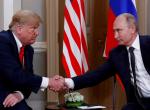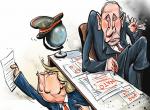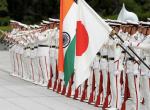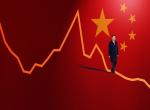The re-election of Donald Trump has been marked by bonhomie with Silicon Valley leaders, notably Elon Musk. A common rhetoric that has been proclaimed during the election campaign focussed on Big Tech and Freedom of Speech, antitrust legislation, and most prominently tariffs iterated multiple times. The grievance against the social media labelled as “fake media” has been accompanied with intensifying power competition with China.
Trump leadership and his style of politics encapsulates the agenda in a more conservative form of politics under ‘America First’ that gained momentum during his first presidency. The confrontational approach on slapping tariffs not only on China but also on partner countries raises questions on America’s foreign policy of engaging allies and partners. Amidst the uncertainty there are questions over Trump's tech policies over his rhetoric of reigning big tech power and confrontation with China.
Lessons from Trump 1.0
Trump ushered in a tech war with China in 2017 with unilateral measures and use of economic statecraft. During the first presidency of Trump, the Export Control Reform Act of 2018 was enacted to restrict the flow of critical items on the grounds of threat to national security. In practice, instead of a blanket ban on certain technology, an entity list was enacted that restricted major Chinese firms such as Hikvision.
The confrontational approach with China gave way to industrial policy to bring back domestic manufacturing. In 2019, Trump signed an executive order that pushed for research in AI calling it as not “an option” but a necessity. Mike Pompeo, then secretary of state, travelled across the Indo-Pacific region under the Clean Network Initiative to persuade countries to opt out of the Chinese telecommunications network. Yet, the primacy coincided with lack of new market access that saw major Chinese investment in AI, data centres and EV supply chains in the Asia-Pacific . The rhetoric and practice of Trump's first presidency demonstrated an agenda pushed by hardliners on China and a nativist, antitrade platform that was central to his campaign.
Silicon Valley as Driver of US Tech Policy
In contrast to Trump 1.0, Trump's second presidency has received massive support from Silicon Valley during the election campaign. This included endorsements from major tech entrepreneurs, a turn from earlier stance with differences over immigration, bias, and personal issues. However, under the Biden administration grievances grew over excessive regulation and stifling innovation. The compliance structure broadened with tough regulations on crypto, and AI following the executive order to comply with AI standards. According to venture capitalist, Andreessen and Horowitzappealed that, “Bad government policies are now the #1 threat to Little Tech.” The emphasis on little tech i.e. startups draw down on the differences with big tech that Trump also voiced against. Google has been facing antitrust regulations with calls for sale of its browser Chrome. Another calls for the removal of section 230 that provides immunity to the tech providers over the content posted over their platform. This is a major point of contention with deep distrust among Republicans over the probing of alleged Russian interference in 2016 elections and after the assault on the capitol Hill on Jan 6, 2021.
The personal grievances of Trump have been reiterated during the election campaign. The agenda of the President can be traced back to his election platform, where he argued “The censorship cartel must be dismantled and destroyed” calling for the reform of section 230 by the U.S. Congress. The position on forced sale or ban of TikTok, a Chinese social media company on national security grounds, has been halted by Donald Trump citing the important role of the platform in his election victory. The conflicting policy position has been bolstered with the presence of major Silicon Valley entrepreneurs in the administration along with officials that have differences calling it a “conservative bias.” The actions against big tech will be a tough balancing act as to how White House relations will be with Silicon Valley but also how other countries that have antitrust cases will react.
Sustaining America’s Position
Besides the domestic approach of maintaining a conservative policy, the overarching policy is to counter China. Trump expressed his views that “AI is scary, but we absolutely have to win. Because if we don’t then China wins.” This comes amidst the suggestion that the Trump administration plans to bolster military use of AI through a series of ‘Manhattan projects’. The plan includes the removal of regulations and formation of industry-led agencies to evaluate AI models and maintain secure systems. Trump has taken special interest in boosting the energy production for AI computing and data centres that connects to his campaign slogan of ‘drill baby drill’, but also to push for more support to industry. The support of major tech leaders in the administration has implications across AI models being adopted with calls against AI regulation.
The major support from the tech companies has a significant impact on AI development. This is exhibited in the changing views of major AI companies on prohibiting any potential military use. Open AI, a leading AI company changed its stance from forbidding any ‘use to harm’ to work with the Pentagon . The work with militaries or defence-tech companies are very much on agenda citing the lead to the AI race for democratic nations. Trump’s announcement of removing guardrails enacted by the Biden administration further raises concern over the development of AI for peaceful purposes. This brings to the forefront the issue of AI governance, where the EU with its risk-based model and China on its data sovereignty model have advanced their versions to shape AI. The appointment of AI & Crypto czar with avoiding tech regulation further reinforces development of AI with questions over Congress bill on deep fakes, generative AI and other AI safety norms.
Bifurcation or Decoupling
In continuation of the first term, there is a focus on bringing more investment from companies, especially relying on punitive measures such as tariffs. Trump has criticized the Science and CHIPS Act enacted by the Biden administration as a bad deal, raising questions over incentives allotted to manufacturers. America First agenda has pushed new investments in the US domestic market followed with big ticket announcements. ‘Stargate’ a mega program with promised investment of $500 billion has been pushed to lead AI development. This comes as the manufacturing base is being developed with Taiwan’s TSMC building a semiconductor plant in Arizona followed by Samsung in Texas and Intel plant in Ohio and other locations. In the case of Intel, its Ohio plant supports 3000 permanent jobs and support from the trade unions that have lobbied on the White House. Many of the tech leaders were part of the fundraising that helped his campaign to close the gap with Biden and Harris during the race.
The TSMC chip plant is ready and will start producing in early 2025 coinciding with Trump assuming office and its first board meeting is scheduled to happen for the first time outside Taiwan in the United States. The uncertainty has pushed companies especially in tech sector to adjust their strategies. It has resulted in change from an export led model, mainly located in China to investment-based strategies across developed and developing markets.
The change is not only visible across the U.S., but also other major countries especially in the Indo-Pacific region. India has seen an increase in investment from major US tech companies ramping production across semiconductor and increase in R&D collaboration. China has ramped up the production of semiconductor and other key technologies before the enactment of more tariffs on its tech sector. There is also a shift with the Chinese government hardening its stance on export controls including critical minerals such as graphite, tungsten, nickel all vital for the production of critical technologies. An instance is batteries where China leads across the sector and more tariffs will significantly affect supply for clean energy.
The actions by the US, especially with Trump's second presidency has also increased uncertainty with the countries pushing a more industrial policy to minimise repercussions from the US-China competition. The pressure has led to Chinese companies investing heavily into Southeast Asia. There has been investment in manufacturing with nickel mining and the EV sector across Indonesia, Thailand. Similar, has been the effort for the semiconductor packaging in Malaysia with investment exceeding $24 billion, Vietnam and Singapore. The patterns are also exhibited across Africa, and Latin American countries where China has bolstered investment across the critical technology sector.
Overall, President-elect Trump's position stems from maintaining an extractive foreign policy and reining in big tech power that has caused harm to conservatives. The personality of Trump and an uneasy relationship with the tech industry cannot be absolved following the Jan.6th incident in 2021 and the actions that will be taken as pledged by Trump. The development of DeepSeek AI model has further upended the US edge in tech pushing techno security competition with China adjusting strategy to reality. Many will benefit from with investment rolling from tech companies including India and ASEAN countries. Yet, the strategic sectors such as EV and renewables in which China leads will force uncertain outcomes with tariffs pushing prices and supply chains adjustment for countries including the United States. The wave of protectionism is emerging in Trump’s tech policy agenda to maintain leadership, further pushing allies and partners to de-risk with their national tech agendas.
Author bio: Dr. Sachin Tiwari is a research fellow at the Kalinga Institute of Indo-Pacific Studies, New Delhi. He holds a PhD in International Relations from Jawaharlal Nehru University, India. His work at the intersection of foreign policy, geopolitics, and technology and has a strong publication record with a focus on security matters.
(The paper is the author’s individual scholastic articulation. The author certifies that the article/paper is original in content, unpublished and it has not been submitted for publication/web upload elsewhere, and that the facts and figures quoted are duly referenced, as needed, and are believed to be correct). (The paper does not necessarily represent the organisational stance... More >>
Image Source: https://spectrum.ieee.org/media-library/a-photo-collage-of-donald-trump-and-several-technologies-including-a-hybrid-bus-a-satellite-a-chip-that-says-ai-a-wind-tur.png?id=54987243&width=1200&height=800











Post new comment